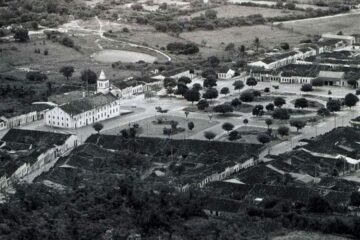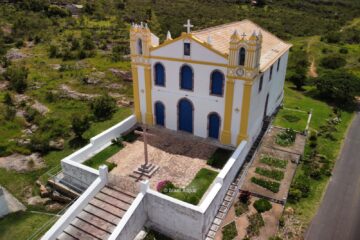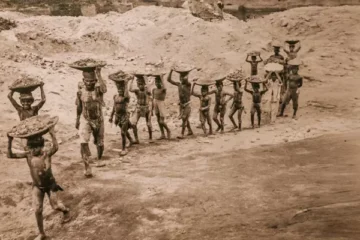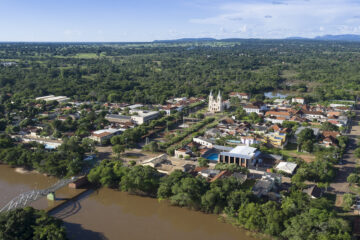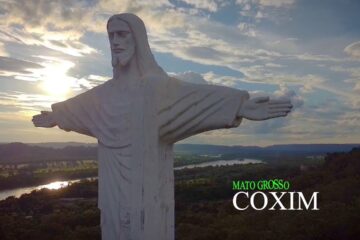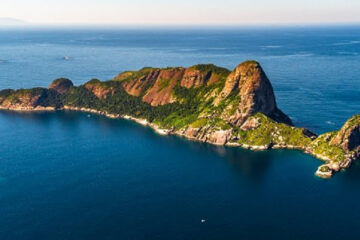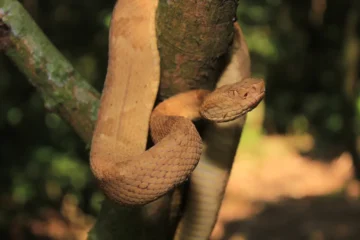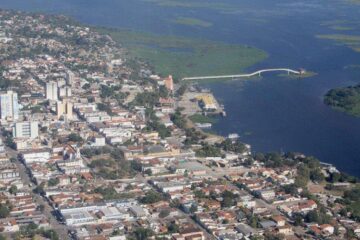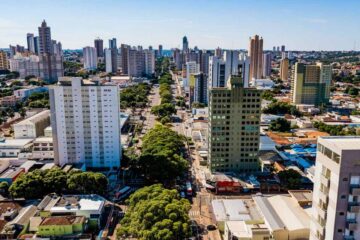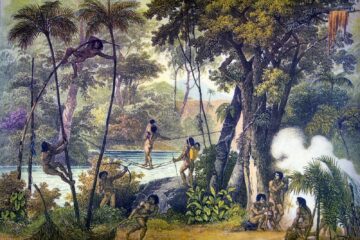Este post também está disponível em:
Português
English

The Convent and Church of Santa Teresa, in Salvador-BA, was listed for its cultural importance.
In 1665, a convent of Discalced Carmelites was founded in Bahia, whose works were conducted by Friar José do Espirito Santo, in a place where there was a small church dedicated to St Teresa, the convent being inaugurated in 1686 and the church completed in 1697.
The convent is built around a square cloister, where the church occupies one side, standing out from the rest of the complex.
The church has a typical Roman Jesuit plan with a transept and nave of equal height, a dome at the intersection and intercommunicating chapels. Attributed to Friar Macário de São João, the church’s design features a galilee with three arches, typical of Benedictine and Franciscan buildings.
The façade’s classical lines are inspired by Vignola’s Roman model, making it a unique case of this type of composition before the end of the 17th century in Brazil.
Fidelity to this typology even led to the tower being replaced by an espadaña, mounted on the side wall of the nave. In 1837, the Archiepiscopal Seminary was installed in the Convent of Santa Teresa. The current high altar, made of silver, comes from the old Cathedral, demolished in 1933.
The building houses the Museum of Sacred Art, maintained by the Federal University of Bahia, with about 1,400 pieces in the collection – including wooden and terracotta images, sculptures, paintings, tile panels, silverware and furniture – dating from the 16th to the 19th century.
In 1959, the Sacred Art Museum of UFBa was installed, considered the largest collection of sacred art in the country.
Location: Rua do Sodré, nº 25 – Pelourinho, Salvador BA
Video about History of the Convent and Church of Santa Teresa

História do Convento e Igreja de Santa Teresa - Salvador BA
See also Churches of Salvador da Bahia
History of the Convent and Church of Santa Teresa

The Convent and Church of Santa Teresa is home to the Museum of Sacred Art of the Federal University of Bahia.
The church and convent of St Teresa resulted from the disciplinary reform of the Carmelite order, carried out by St Albert, with the help of St Teresa of Avila and St John of the Cross.
The order of Discalced Carmelites was authorised in 1665 to settle in Bahia, at the site called Preguiça.
The first group of monks, coming from the province founded in Angola, built a wooden hospice there.
This group included Friar Manoel de Santo Alberto, Friar Jerônimo de Santo Alberto, Friar João das Chagas and the lay brothers Friar Francisco da Trindade and Friar Antônio da Apresentação, under the priory of Friar Joseph do Espírito Santo.
The wooden facilities of the hospice served as temporary housing for the religious for nine years, as they did not yet have a licence to found the convent.
The exact date of the replacement of the hospice by the definitive convent and church, built on a higher ground, is not known.

Documents from 1680 already referred to the construction, but noted that there were few alms to continue it.
Without any foundation or proof, several authors attribute the design to the Benedictine architect Friar Macarius of St John. Of the materials used in the construction, it is known that some stones, such as those for the pulpits, came from Portugal.
Most, however, were obtained locally. There was a quarry at the foot of the Preguiça slope and, according to some authors, the religious set up their crane there to transport the materials.
The new church, however, was not completed until the end of the 17th century, when it was opened in honour of the patron saint, Saint Teresa of Avila. Friar Antonio de San José was prior at the time.
On that occasion, the image of Our Lady of Mercy was transferred to the small chapel at the exit of the transept of the church, which had already been described by Friar Agostinho de Santa Maria.
The church and convent were officially inaugurated on 15 October 1697.
The church was enriched with valuable tiles, paintings, carvings and implements as a result of the friars’ active religious activity.
In the struggle for independence, eight friars and two brothers, all Portuguese, became involved with people in the community accused of collaborating with the Lusitanian faction.

In 1836 there were only a few remnants of the Terésios in Bahia.
The presidency of the province and the surviving religious agreed to put the dying convent to a new use, with the establishment of the Bahia seminary in 1837.
The convent and church of Santa Teresa were incorporated into the Mitra with the extinction of the order of Discalced Carmelites of Bahia, by effect of the Provincial Law of 2 June 1840, sanctioned by the president of the province, Tomás Xavier García d’Almeida.
Despite the 1855 imperial ban on the admission of seminarians, the minor seminary was eventually established in buildings added to the Santa Teresa complex in 1858.
Transformations were then carried out by the Companhia Predial Baiana, under the command of the French engineer F. P. Lenoir.

In 1888, the administration of the seminary passed to the Vincentian Fathers or Congregation of the Lazarist Missions of Paris, with Father Júlio José Clavelim as rector.
During this period, according to Valentin Calderón, the convent of Santa Teresa underwent modifications that damaged the architectural aspect of the building, concealing the original with various other constructions.
Interior walls were knocked down and doors opened, de-characterising the building.
In this set of interventions, some works of art suffered severe losses, such as the removal of the church’s original high altar around 1890, which was replaced by a concrete one that was demolished in the 20th-century renovation by the University of Bahia.
As can be seen, the convent was occupied occasionally by various organisations from an early date.
The Academia Brasílica dos Renascidos was established in the convent.
During the independence struggles in 1823, it was occupied by General Inácio Luís Madeira de Mello and the Brazilian troops.
Around 1840, it housed the Society of Agriculture, which had already been established there when the seminary was created.
The Sociedade Ficlomática da Química, the former “apothecary”, used the seminary from 1849.
When the seminary was evicted, the School of Economic Sciences, established by the rector Edgard Santos, creator of the University of Bahia, was housed in the convent.
In 1969, when it moved from 28 December Street to the Canela neighbourhood, the School of Fine Arts also spent some time there.
Shortly before that, in 1966, the Bahia Art Museum was temporarily established there.
It was the aforementioned rector Edgard Santos who put this monument to its best use, after the Carmelites themselves.
The Carmelites’ valuables, confiscated by the provincial government on no known grounds, were in the custody of the Casa Pia dos Órfãos de São Joaquim and then passed into the hands of the rector of the archiepiscopal seminary.
In 1839, they were requisitioned by the provincial president, Tomás Xavier Garcia, and added to the other goods in the custody of the provincial treasury.
A few pieces remained for the service of the church of Santa Teresa, and the others, which were of little use, were distributed among the poor parishes, and the Archbishop was notified of the fact.

In 1846, it was ordered that these goods pass to the vice-commissary of the Holy Land in Salvador, Friar Manoel de Maria Santíssima do Rosário, along with all root goods, furniture, semovatives, images and ornaments.
Some properties were auctioned off and converted into policies that were added, with other properties, to the seminary’s patrimony.
The minor seminary operated in the convent of St Teresa until 1953. Shortly afterwards, on 6 March 1958, an agreement was signed between the University of Bahia and the Archdiocese of Salvador.
Negotiations took some time, with the University undertaking to restore and preserve the monument, respecting the spaces protected by heritage laws, for use for cultural purposes and university activities, and allowing religious services regulated by Canon Law.
Approved by IPHAN, the works were still interrupted because Cardinal Dom Augusto Álvaro da Silva did not agree with the installation of a cultural centre in the convent’s space.
centre in the convent, although he approved the restoration of the building, but for the installation of Carmelite nuns.
IPHAN firmly opposed the cardinal’s position and sent Bahia a programme for the use of the former convent and church.
This programme was drawn up by an unnamed architect from the University of Bahia, in collaboration with Renato Soeiro from Iphan.
Heritage gave Wladimir Alves de Souza the task of advising and supervising the works.
The then president of IPHAN, Rodrigo de Melo Franco de Andrade, collaborated in the process of setting up the museum, demanding that the works be constantly supervised by the architect Fernando Leal, but the official person in charge of monitoring the works ended up being Diógenes Rebouças.
The engineer Geraldo Câmara, among others, was in charge of the construction work.
Before starting, at the request of Rector Edgard Santos, the curator of the Vatican Museum, Deoclécio Redig de Campos, was expected to take part in organising the exhibition rooms of the future Museum of Sacred Art.
During the restoration of the buildings, the dependencies not listed by the Patrimony were removed, enclosing the convent in a well-walled plot, including the former minor seminary building.
The work brought some revelations, such as the painting of the old ceiling of the refectory, covered with a new ceiling, damaged by the previous removal of some of the boards between the beams.
boards between the beams.
Oil paintings were also discovered on the semicircular ceiling of the little chapel in the corridor next to the church and on the ceiling of the noble cell, whose window opens onto the chancel.
Once the Museum of Sacred Art was restored, a discussion arose about the collection to be exhibited, as many members of the archdiocese were against the loan of pieces.
On the occasion of the museum’s inauguration on 10 August 1959, pieces from the Curia’s collection were exhibited, as well as others donated or loaned, including some furniture, paintings and other objects from the Evora Museum.
The IV International Colloquium of Luso-Brazilian Studies was being held at the time, bringing several specialists in the field of Portuguese and Brazilian history to Salvador.
Created by the rector Edgard Santos, the Museum of Sacred Art formed its initial collection with artistic pieces owned by the Curia, most of which came from the demolition of the old Sé church, destroyed in 1933 to make way for the tramway.
Until then, these pieces had been stored in the former Jesuit library in the cathedral.
For some years, Dom Clemente Maria da Silva-Nigra, a Benedictine and art researcher, was in charge of the museum.
During his tenure, several pieces from the collection of the monastery of São Bento were exhibited there for public visitation.
With the restoration of the Benedictine complex in 2005, this collection returned to the monastery, which set up its own museum.
